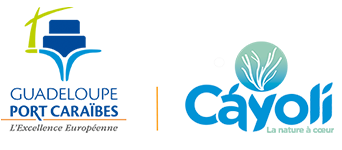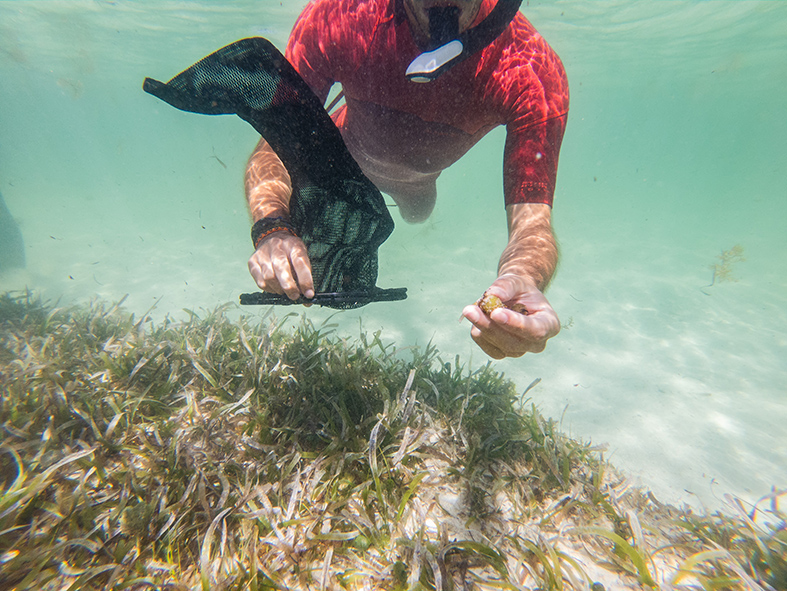As every year since the start of the program, Thalassia testudinum seagrass seeds are collected from specific sites. They will then be cultivated in a nursery to restore degraded seagrass.
From April to August is the flowering and fruiting season of the Thalassia testudinum. It is one of the species targeted in the Cáyoli program. During this period, Guadeloupe Port Caraïbes pilots a monitoring of the development of flowers and seeds on several sites of the archipelago. What is it objective? Deepen knowledge on this little-known species in order to develop protocols for active restoration of the environment.
Seagrass beds are essential to coastal life: green turtles love them and they are the larder of many species! They are also important for the protection of our coasts.
THE PROCESS

Collection of seeds in natural environment

The collected seeds

Germination in laboratory

Cultivation in nursery

Setting up in the natural environment
Once implanted, the seagrass are subject to a scientific follow-up which will allow to evaluate the relevance of the methods used and to develop functional protocols.
Photo credit : Nicky Mariette


